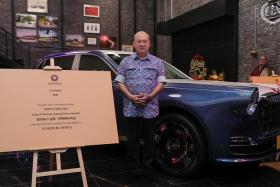Tips on driving in Malaysia
Do you have any tips on driving in Malaysia? I have driven only to Johor Bahru, but intend to embark on a driving holiday farther north and through the smaller towns.
In general, the traffic rules in Malaysia are the same as Singapore's. However, as in every country, there are a few guidelines to bear in mind.
You may be less familiar with the Malaysian highways and the inter-town two-lane B-roads.
Speed limit
The highway speed limit in Malaysia is 110kmh, but you are likely to come across vehicles exceeding the stated limit. It is important to be vigilant about faster traffic approaching from the rear, so you can filter to the left safely to give way.
Lane discipline
Malaysian drivers are usually good with lane discipline and rarely fail to use the indicator. Likewise, they expect you to do the same.
When passing a long line of vehicles on the highway, especially trucks and buses, use your right indicator. This informs slow-moving vehicles that you are about to pass them and that they are not to change lanes.
Safe distance
Maintain a safe distance from the car in front when cruising on the highway. You are no doubt used to the gaps between vehicles on Singapore's expressways, but the gaps need to be bigger on Malaysian highways.
There will also be instances of a slow-moving vehicle - such as a truck or bus - entering your lane. Estimate seven to eight car lengths between yourself and the vehicle in front when cruising at 110kmh.
Water puddles
In the rain, beware of puddles. Even the best tyres or all-wheel-drive will be of no help if the car skims over water and floats momentarily. The only precaution, therefore, is to reduce speed in wet weather.
Keep a safe distance from vehicles in front of you so that you can observe their path and avoid puddles, which are rare on highways but more common on B-roads.
B-road driving
B-road driving requires higher levels of discretion, judgment and attention. Always be on the lookout for slow vehicles joining the road from lanes on the left or right side.
Overtake only when you can see sufficiently far ahead on the road and never in a curve. The indicator is a prerequisite to any overtaking manoeuvre.
Knowing your car's acceleration capability is equally important so you can pass a vehicle swiftly and safely. Otherwise, you could find yourself facing an oncoming vehicle from the other direction bearing down on you.
Get The New Paper on your phone with the free TNP app. Download from the Apple App Store or Google Play Store now



